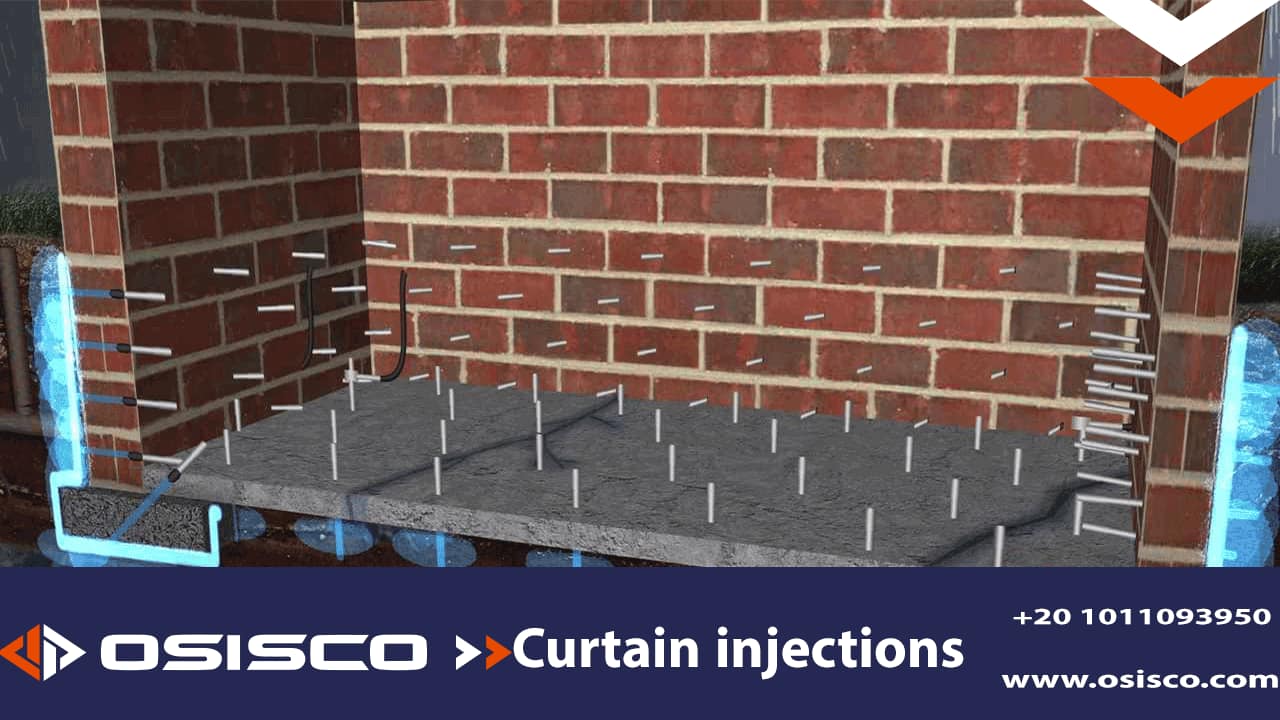Curtain injections are used for the post-construction sealing of structural elements with ground contact affected by moisture.
Curtain injections are suitable for restoring basements, shafts, canals, and tunnels. Curtain injections also called gel injections are mainly used if the structural elements concerned cannot be sealed from the outside or if this is not possible without disproportionate costs or effort.
The subsequent waterproofing of building components that are not accessible due to neighboring construction or other considerations (such as tunnels, underground parking garages, elevator shafts, or concrete base slabs), is commonly carried out through the waterproofing method referred to as curtain injection, next we will know more about it with OSISCO.
Application of Curtain injections
- Surface sealing of structural components with ground contact
- Basements and partial basements.
- Underground parking lots.
- Floor slabs.
- Abutments of bridges and wing walls.
- Tunnel structures.
- Sewer systems and shaft installations.
- Foundation pits.
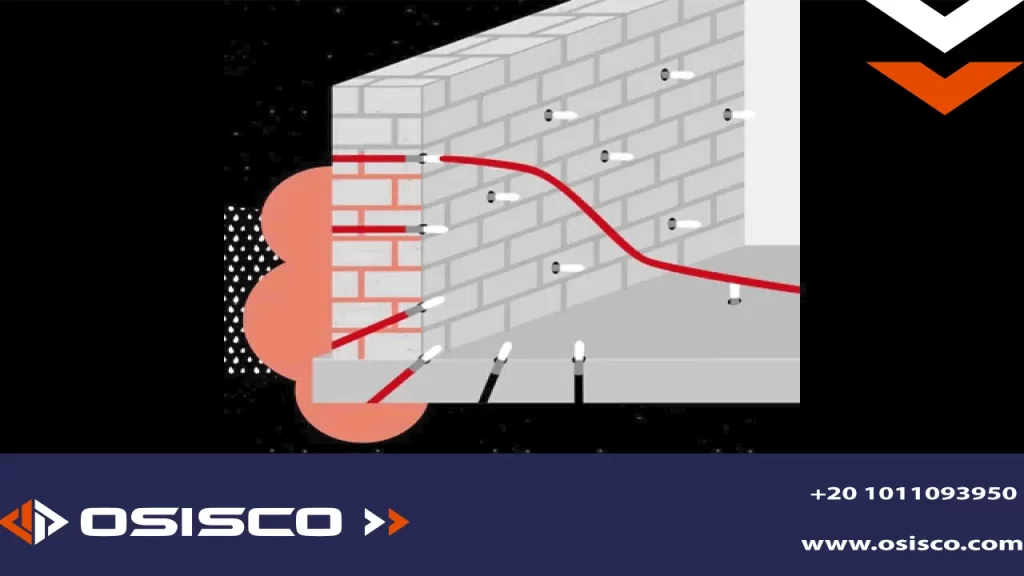
- Protection from slope water :
- Retaining walls.
- Buildings situated on a slope.
- Joint sealing:
- Expansion joints, especially in defective sheets & tapes.
- Connection joints between old and new buildings.
- Tubing joints.
- Sewer connections.
Curtain injections in the basement
Exterior basement waterproofing from inside the building in the case of renovation, it is not always possible to expose the exterior walls through excavation.
For example, where the area to be excavated is built upon, traffic concerns impede the excavation, or the economic cost of excavation is deemed too high.
read more about Cracking injection method
You would first think of internal basement waterproofing, but in some cases, such as in historical buildings or buildings with special architectural requirements, this may not be desirable.
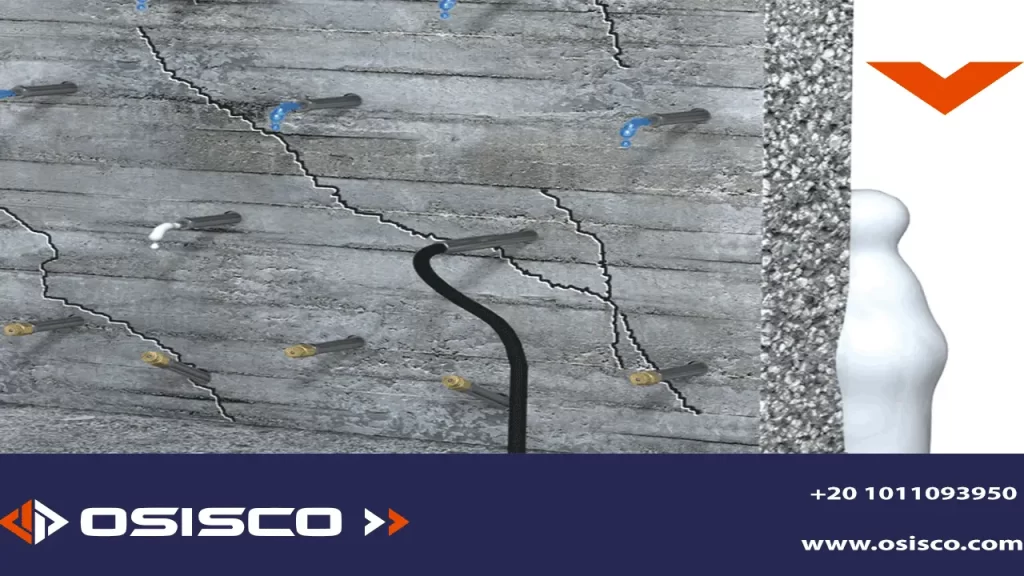
In these cases, a curtain injection with Injection Gel G4 is possible, The resin is injected through the wall from the inside to the outside.
Water present behind the wall does not represent a challenge for the injection gels since they do not react with it, but instead, it is bound in its matrix, resulting in a waterproof elastic solid body.
The injection is carried out with the special two-component pump, Acrylic Gel Pump, and through special injection packers. Taking advantage of the extremely low viscosity of the gel, injection into difficult soil conditions like fine sand, silt, and some clays is possible.
Curtain injections in Tunnel
Many tunnels in the past have suffered considerable damage due to the apparent swelling processes. To inhibit swelling water is completely restricted for construction.
The water-bearing ground formations were additionally grouted with polyurethane resin during the course of the tunnel driving through pre-excavation drilling holes. Subsequently, the excavation-damaged zones in the anhydrite zones are systematically grouted with acrylate gel.
You can also know more about crack injection system.
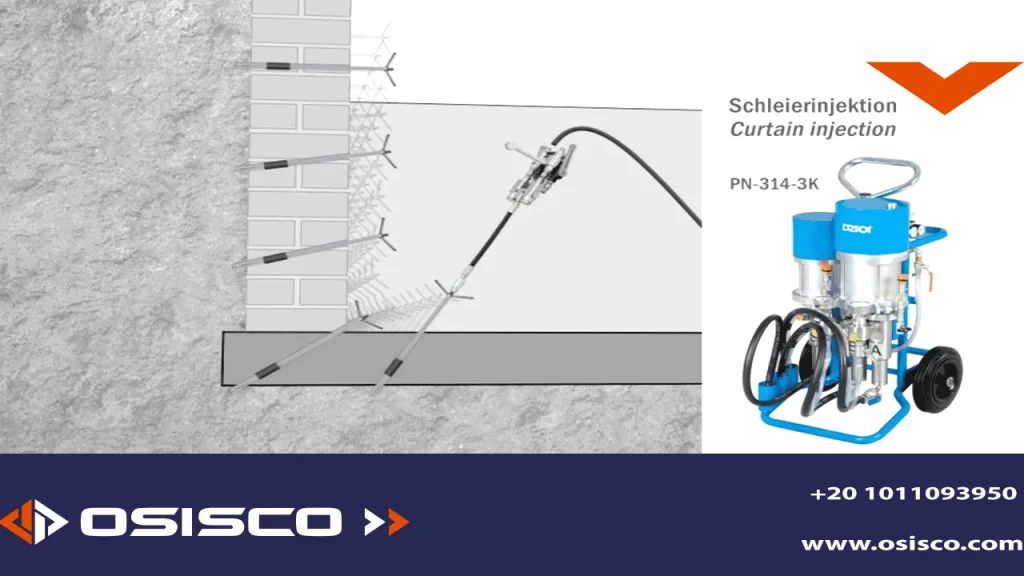
Curtain injections in Retaining structure
A Brief Overview of the Curtain Wall Grouting Process: Injection holes are drilled in a diamond grid pattern, Grout injection begins at the bottom of the wall, Grout is then injected a little higher so that any excess grout flows down over the previous injection area, This creates a lapping effect, like shingles on a roof, Injection continues to the top of the wall.
In addition to the “too many leaks” scenario, curtain wall grouting may be required when all cracks cannot be identified in a leaking wall, when a previous crack injection has failed, or when a structure has a negative crack injection history.
Curtain injections in Dams
The design of a dam is very complex because it is not very repetitive and it is according to the conditions of the site, the foundations, and the available materials of realization that the type of dam is adopted.
Based on historical failure cases of the earth dam, the most effective and responsible factors for earth dam failures are structural failure and seepage problems through the dam body and its foundation.
The most significant seepage characterizations in earth dams are hydraulic gradient, flow rate, and pore pressure. Investigated spacing between two vertical curtains and a number of injection curtains against uplift pressure and erosion phenomenon.
read more about Soil Nailing System
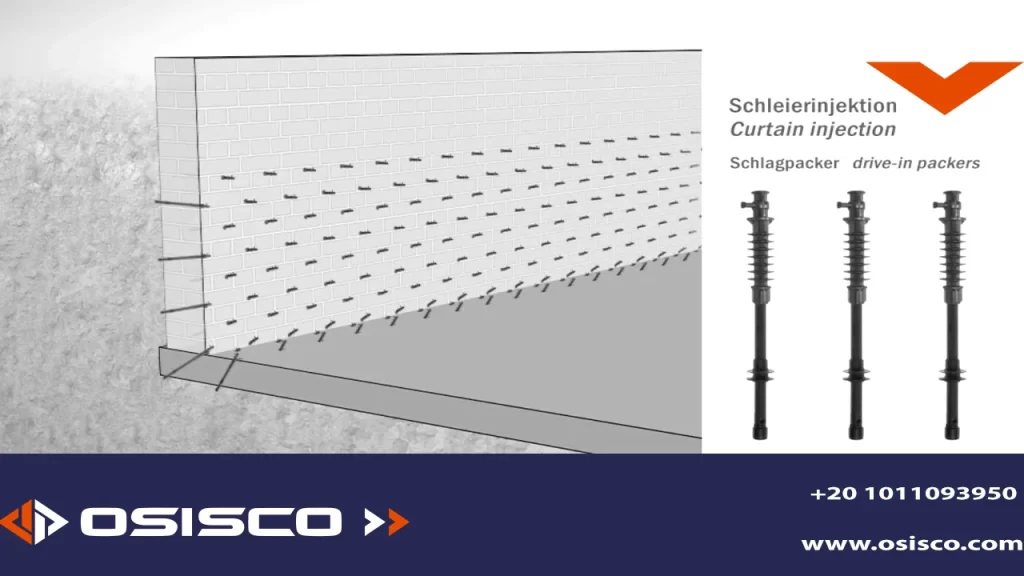
Their results showed largest spacing between two curtains increased uplift pressure and decreased the gradient, the best number of curtains for decreasing uplift pressure was three.
Investigated the effects of various parameters such as the angle of the injection curtain, length, spacing, and the number of injection curtains.
Investigators studied the effect of the cutoff wall depth, Investigated the impact of the depth of the cutoff wall on characteristics of seepage such as outlet gradient, flow rate, and uplift pressure.
As well, Investigated the impact of a cutoff wall (permeability, position, and depth) with clay core thickness, and they found a maximum hydraulic gradient occurs in the cutoff wall and discharge reduction depends on the optimum position.
As permeability diminishes and the cutoff wall depth increases. Study depth of the double cutoff wall, Investigated the effectiveness of inclined and depth of dual cut-off walls underneath hydraulic structures.
They observed that replacing a downstream cutoff wall with a deeper cutoff wall decreased the outlet gradient.
Our company is characterized by the completion of similar works perfectly with the presence of highly experienced engineers with trained labor, equipment, and materials.
We are also distinguished by the speedy completion of our commissioned work. Water leaks through cold joints, cracks, and other concrete imperfections can often only be sealed sufficiently and permanently by injection techniques known as curtain and bladder injection.
The injection Product fills and seals the crack from the inside. The product is injected through the structure to create a membrane on the positive side of the structure.
read more about Foam soil stabilization
Using curtain injections allows you to stop multiple leaks at once and protects the structure from long-term damage.
It is the preferred method to repair leaking basement walls, underground car parks, concrete slabs, tunnels, and other structures affected by various elements that can’t be sealed from the outside.
Curtain injections may also be required when previous attempts at crack injection have failed or when not all the cracks can be found in a leaking wall.
